PPT-Introductory Logic
Author : lindy-dunigan | Published Date : 2015-11-28
PHI 120 Presentation Basic Concepts Review Review of WFFs Identifying and Reading Sentences Identifying Form WFFs Sentential Logic Simple WFFs P Q R S Complex
Presentation Embed Code
Download Presentation
Download Presentation The PPT/PDF document "Introductory Logic" is the property of its rightful owner. Permission is granted to download and print the materials on this website for personal, non-commercial use only, and to display it on your personal computer provided you do not modify the materials and that you retain all copyright notices contained in the materials. By downloading content from our website, you accept the terms of this agreement.
Introductory Logic: Transcript
Download Rules Of Document
"Introductory Logic"The content belongs to its owner. You may download and print it for personal use, without modification, and keep all copyright notices. By downloading, you agree to these terms.
Related Documents

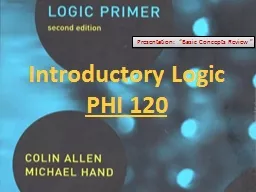
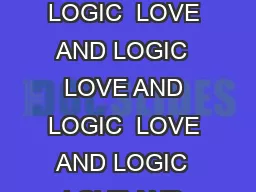
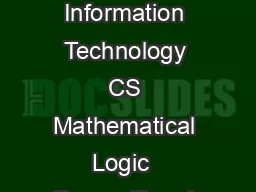
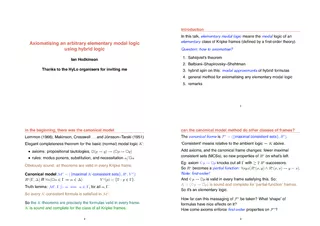
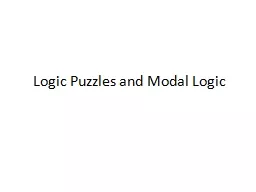
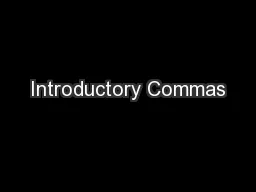
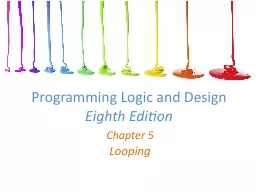
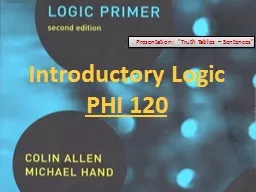
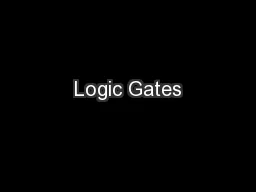
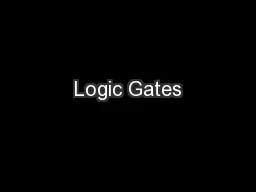
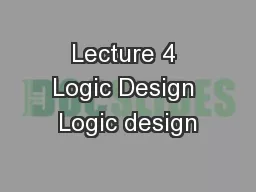

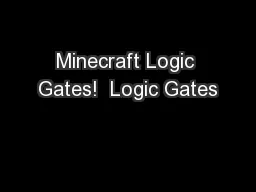
![[EBOOK] Introductory Logic: The Fundamentals of Thinking Well Student Edition (Canon Logic)](https://thumbs.docslides.com/1007939/ebook-introductory-logic-the-fundamentals-of-thinking-well-student-edition-canon-logic.jpg)